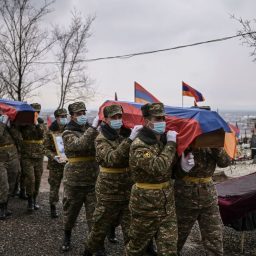The Boom in the Arms Manufacturing Industry amid the Ukraine-Russia War

Photo source: Unsplash

Photo source: Unsplash

The democratic agora has not closed yet. Debate does not kill reason. On the contrary, it feeds it. Recognizing telltale signs is not a magical attribute. Reality can be evoked through analysis without bias.

In the span of six weeks, Canada has been grappling with a relentless onslaught of wildfires, which have spiraled out of control, prompting mass evacuations and scorching millions of acres of land. Why is it happening?

Koran burnings and Kurdish protests have angered Turkey, which refuses to ratify Stockholm’s entry into the Atlantic Alliance. The global outrage over the burning of the Koran a week ago in front of a central Stockholm mosque could not have come at a worse time for Sweden.

Vladimir Putin, the enigmatic figure who has dominated Russian politics for over two decades, has left an indelible mark on his country’s political landscape.

Many countries around the world have implemented lockdown measures and conducting massive testing, while Japan managed the situation without taking such measures.


According to a report released by the OECD on 3 March, global annual production of plastic products will reach 1.2 billion tons by 2060, nearly three times the current level.


An exchange of fire on the border between Azerbaijan and Armenia resulted in the death of seven soldiers from both sides, in a region that the two countries dispute, the scene of regular clashes



WHO says coronavirus is a pandemic The World Health Organization…


Iran is a country in West Asia, bordered on the north and centre by the Caspian Sea and the south by the Persian Gulf and the Arabian Sea.


China’s Foreign Minister Qin Gang said on Monday that it is imperative to stabilize Sino-American relations after a series of “erroneous words and deeds” pushed them back below the freezing point.


King Charles III and his wife, Camilla, Duchess of Cornwall, are scheduled to embark on a state visit to Kenya later this month, as confirmed by the press office at Buckingham Palace on Wednesday.


In a move that sent shockwaves through the political landscape of Ireland, Prime Minister Leo Varadkar, the leader of the center-right coalition government, announced his resignation on Wednesday.


On Tuesday, the European Union (EU) took a decisive step forward in the global fight against pesticides. The EU Parliament passed the first stage of a revolutionary legislative project aiming

